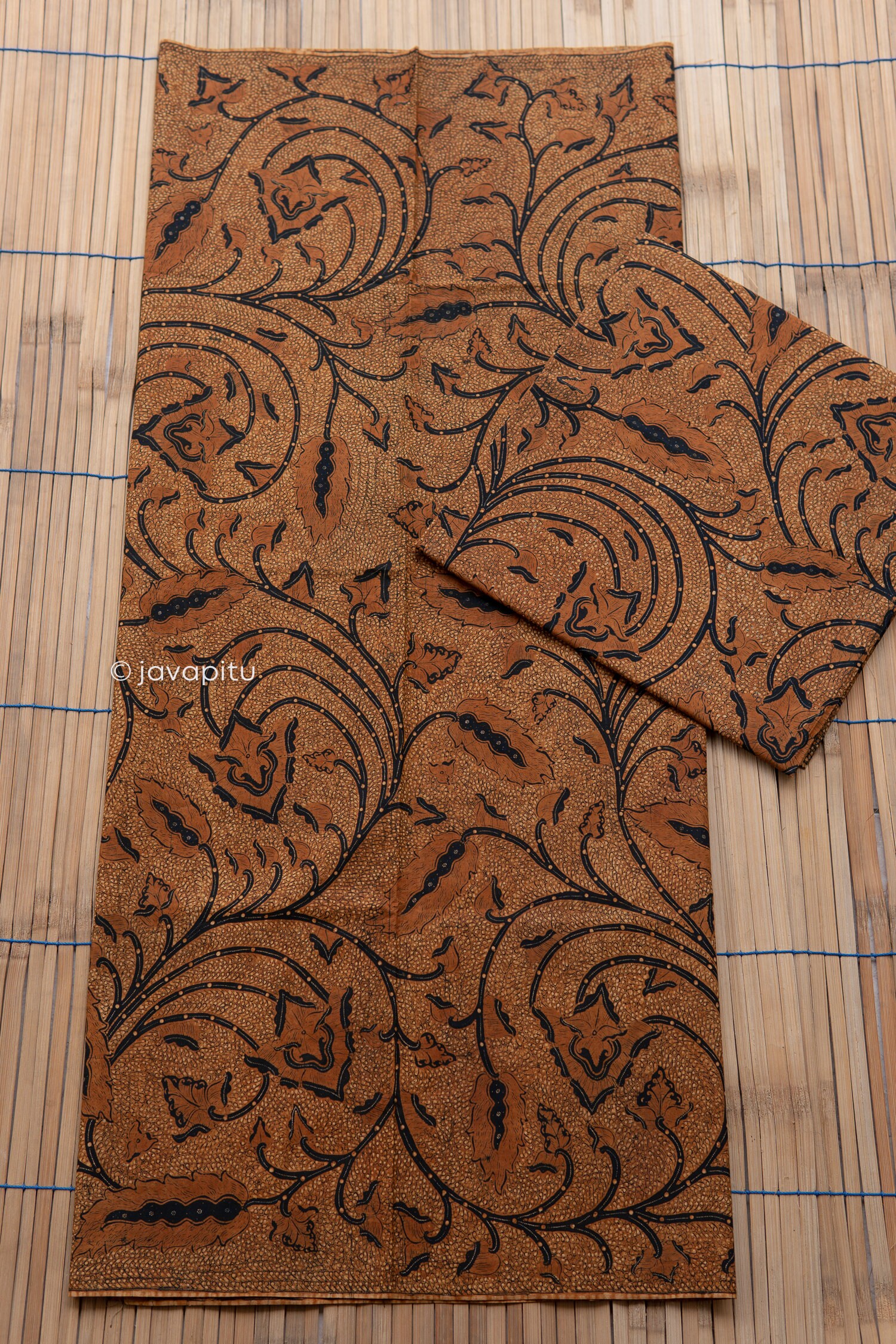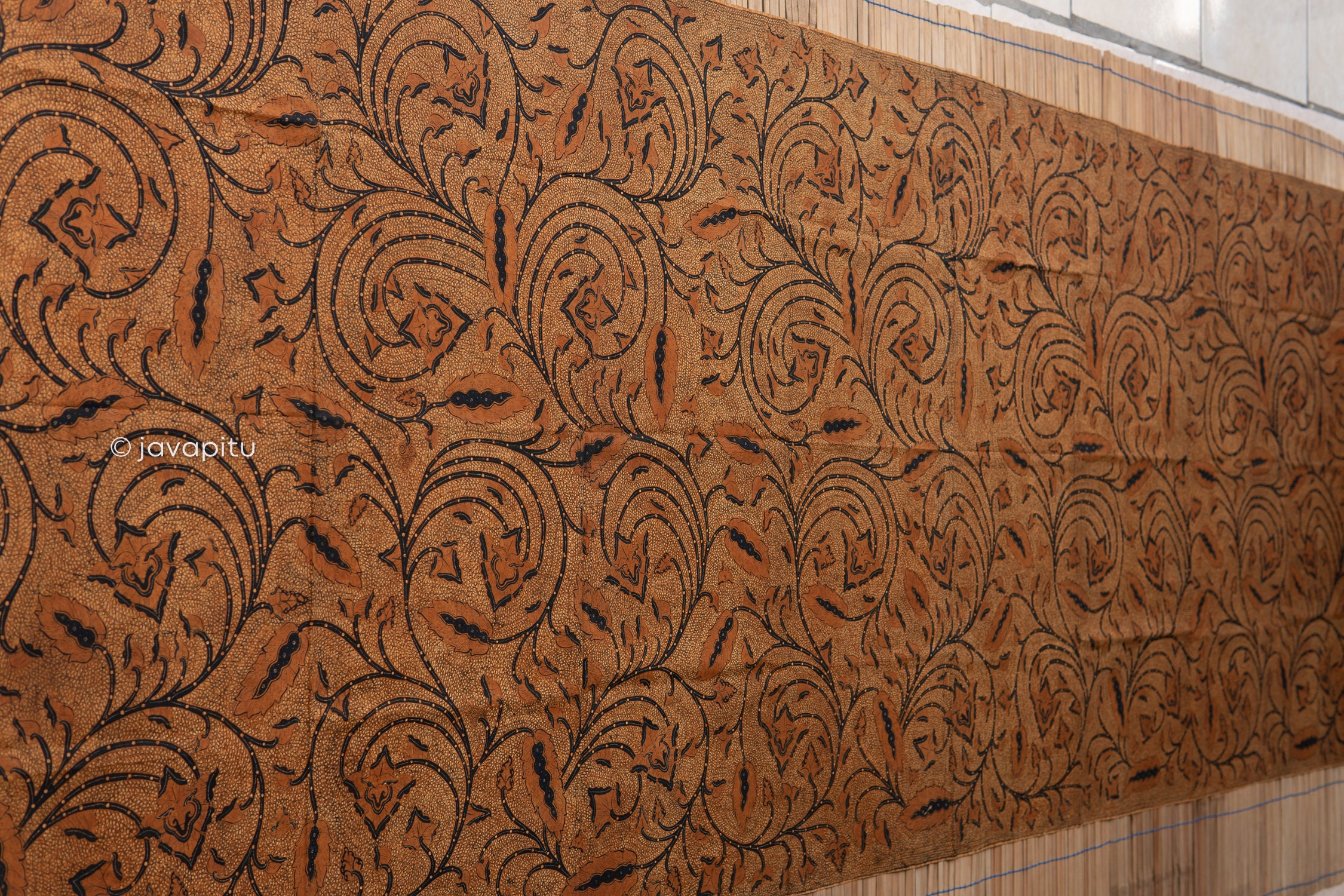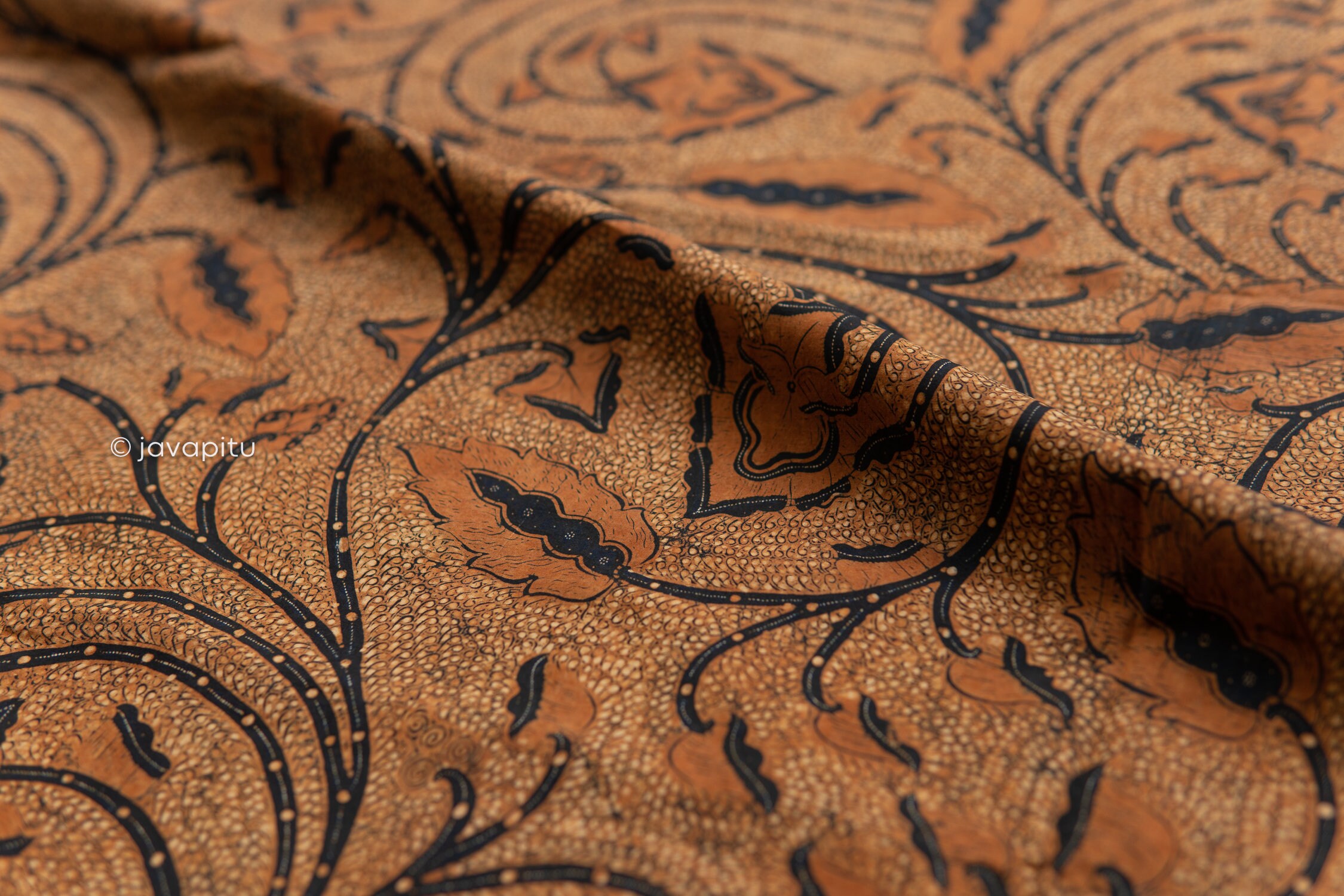Highlights









Description
A pair of finely written batik, with natural dyes from solo
Only 1 pcs Available, Rare and Exclusive Batik
Batik Tulis, Hand-Drawn wax resist
Note: 2 Hand-drawn batik for Couple, Natural Dyed, Premium quality
` Sign :
` Pattern: Lung-Lung'an latar Ukel
` Circa. 1960
` Origin : Surakarta, Central Java
` Category : Batik Classic Javanese
` Color : u2028Natural Dyed from Tingi wood
` Kain panjang, Skirt clothr
` Dimension : 250x105 Approxr
` Condition : Mint condition, Batik in almost like new and the fabric is very well maintained r
What do buyers need to know?
` Vintage, Handmade item may have minor defect
` There is no item information that is intentionally hidden
` Non-able, Non-able, and Non-able
Marketplace : @Javapitu
` Tokopedia
` Etsy
Social Media : @Javapitu
`
`
` Youtube
` TikTok
More Collection :
.javapitu
Contact: (+62) 87700700072
The first step in the process of making batik is to draw a design on a piece of white fabric using a pencil or pen. This design is then traced onto the fabric using a tool called a " TJANTING " which is a small copper or brass pen filled with hot wax. The wax is used to resist the dye that will be applied to the fabric later on in the process.
tOnce the wax has been applied to the fabric, the fabric is then dyed using a variety of natural dyes made from plants, minerals, and some batik using synthetic dyes by immersing the cloth in a vat of dye, The dye will only be absorbed by the areas of the fabric that are not covered in wax, creating the intricate patterns and designs that are characteristic of Indonesian batik.
t
tAfter the fabric has been dyed, the wax is removed using a process called " NGLOROD " The fabric is placed in a vat of hot water and the wax is dissolved, revealing the beautiful patterns and colors that have been created.
tThe process of making batik is a time-honored tradition in Indonesia and is passed down from generation to generation. It requires a great deal of skill, patience, and attention to detail, but the end result is always a work of art that is treasured by those who own it.
Article by Javapitu rst step in the process of making batik is to draw a design on a piece of white fabric using a pencil or pen. This design is then traced onto the fabric using a tool called a " TJANTING " which is a small copper or brass pen filled with hot wax. The wax is used to resist the dye that will be applied to the fabric later on in the process.
tOnce the wax has been applied to the fabric, the fabric is then dyed using a variety of natural dyes made from plants, minerals, and some batik using synthetic dyes by immersing the cloth in a vat of dye, The dye will only be absorbed by the areas of the fabric that are not covered in wax, creating the intricate patterns and designs that are characteristic of Indonesian batik.
t
tAfter the fabric has been dyed, the wax is removed using a process called " NGLOROD " The fabric is placed in a vat of hot water and the wax is dissolved, revealing the beautiful patterns and colors that have been created.
tThe process of making batik is a time-honored tradition in Indonesia and is passed down from generation to generation. It requires a great deal of skill, patience, and attention to detail, but the end result is always a work of art that is treasured by those who own it.
Article by Javapitu